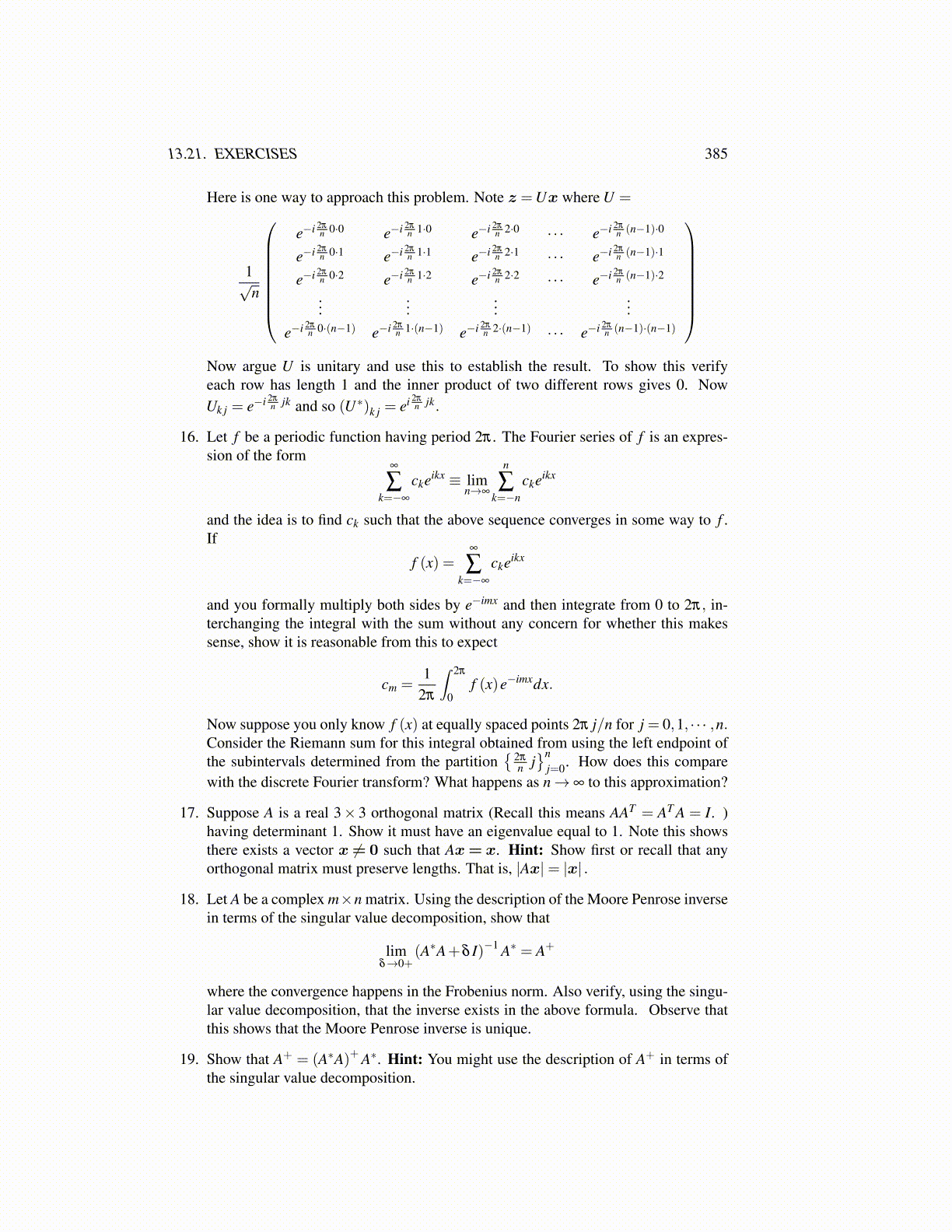
13.21. EXERCISES 385
Here is one way to approach this problem. Note z =Ux where U =
1√n
e−i 2πn 0·0 e−i 2π
n 1·0 e−i 2πn 2·0 · · · e−i 2π
n (n−1)·0
e−i 2πn 0·1 e−i 2π
n 1·1 e−i 2πn 2·1 · · · e−i 2π
n (n−1)·1
e−i 2πn 0·2 e−i 2π
n 1·2 e−i 2πn 2·2 · · · e−i 2π
n (n−1)·2
......
......
e−i 2πn 0·(n−1) e−i 2π
n 1·(n−1) e−i 2πn 2·(n−1) · · · e−i 2π
n (n−1)·(n−1)
Now argue U is unitary and use this to establish the result. To show this verifyeach row has length 1 and the inner product of two different rows gives 0. NowUk j = e−i 2π
n jk and so (U∗)k j = ei 2πn jk.
16. Let f be a periodic function having period 2π . The Fourier series of f is an expres-sion of the form
∞
∑k=−∞
ckeikx ≡ limn→∞
n
∑k=−n
ckeikx
and the idea is to find ck such that the above sequence converges in some way to f .If
f (x) =∞
∑k=−∞
ckeikx
and you formally multiply both sides by e−imx and then integrate from 0 to 2π, in-terchanging the integral with the sum without any concern for whether this makessense, show it is reasonable from this to expect
cm =1
2π
∫ 2π
0f (x)e−imxdx.
Now suppose you only know f (x) at equally spaced points 2π j/n for j = 0,1, · · · ,n.Consider the Riemann sum for this integral obtained from using the left endpoint ofthe subintervals determined from the partition
{ 2π
n j}n
j=0. How does this comparewith the discrete Fourier transform? What happens as n→ ∞ to this approximation?
17. Suppose A is a real 3× 3 orthogonal matrix (Recall this means AAT = AT A = I. )having determinant 1. Show it must have an eigenvalue equal to 1. Note this showsthere exists a vector x ̸= 0 such that Ax= x. Hint: Show first or recall that anyorthogonal matrix must preserve lengths. That is, |Ax|= |x| .
18. Let A be a complex m×n matrix. Using the description of the Moore Penrose inversein terms of the singular value decomposition, show that
limδ→0+
(A∗A+δ I)−1 A∗ = A+
where the convergence happens in the Frobenius norm. Also verify, using the singu-lar value decomposition, that the inverse exists in the above formula. Observe thatthis shows that the Moore Penrose inverse is unique.
19. Show that A+ = (A∗A)+ A∗. Hint: You might use the description of A+ in terms ofthe singular value decomposition.